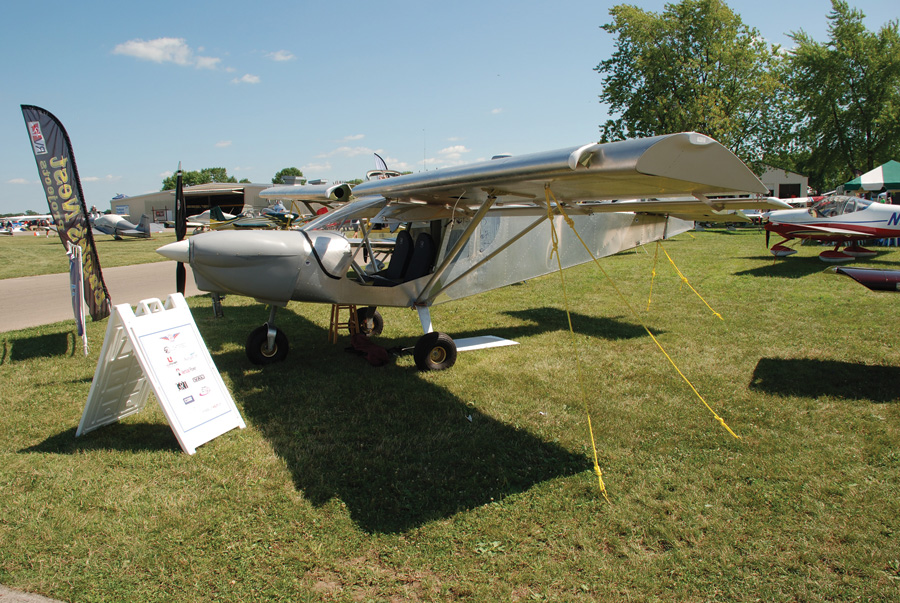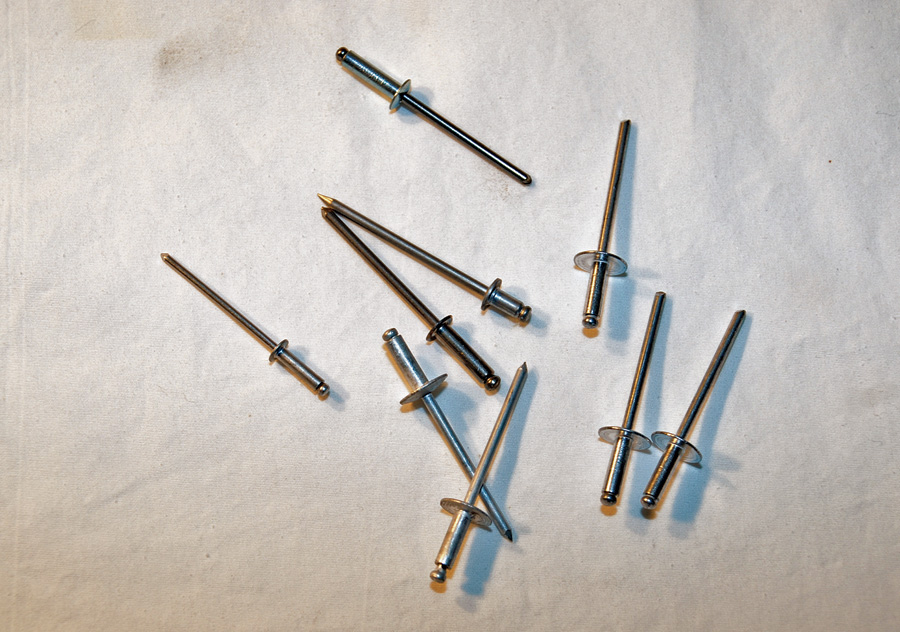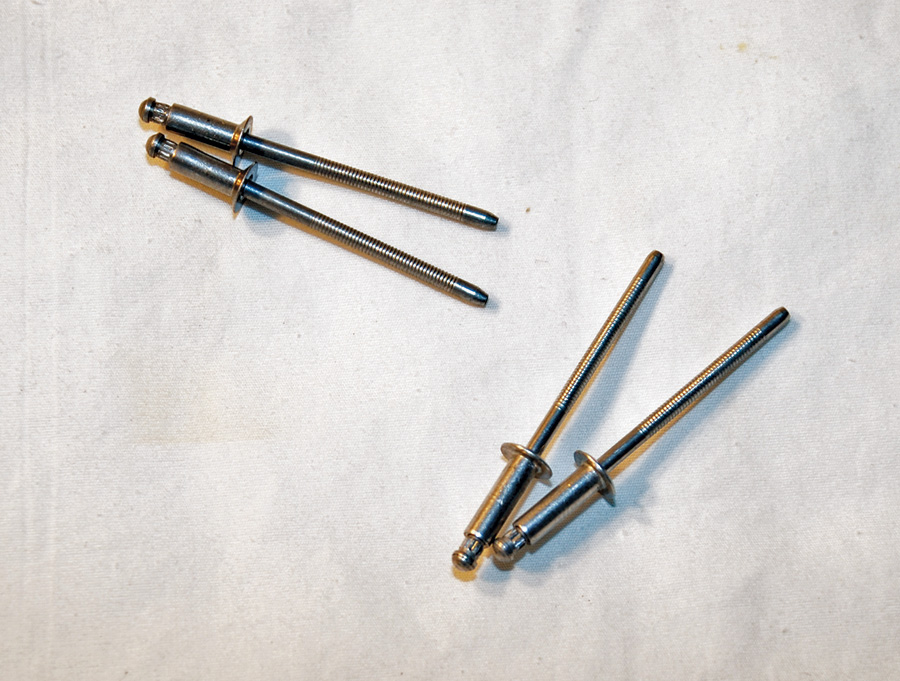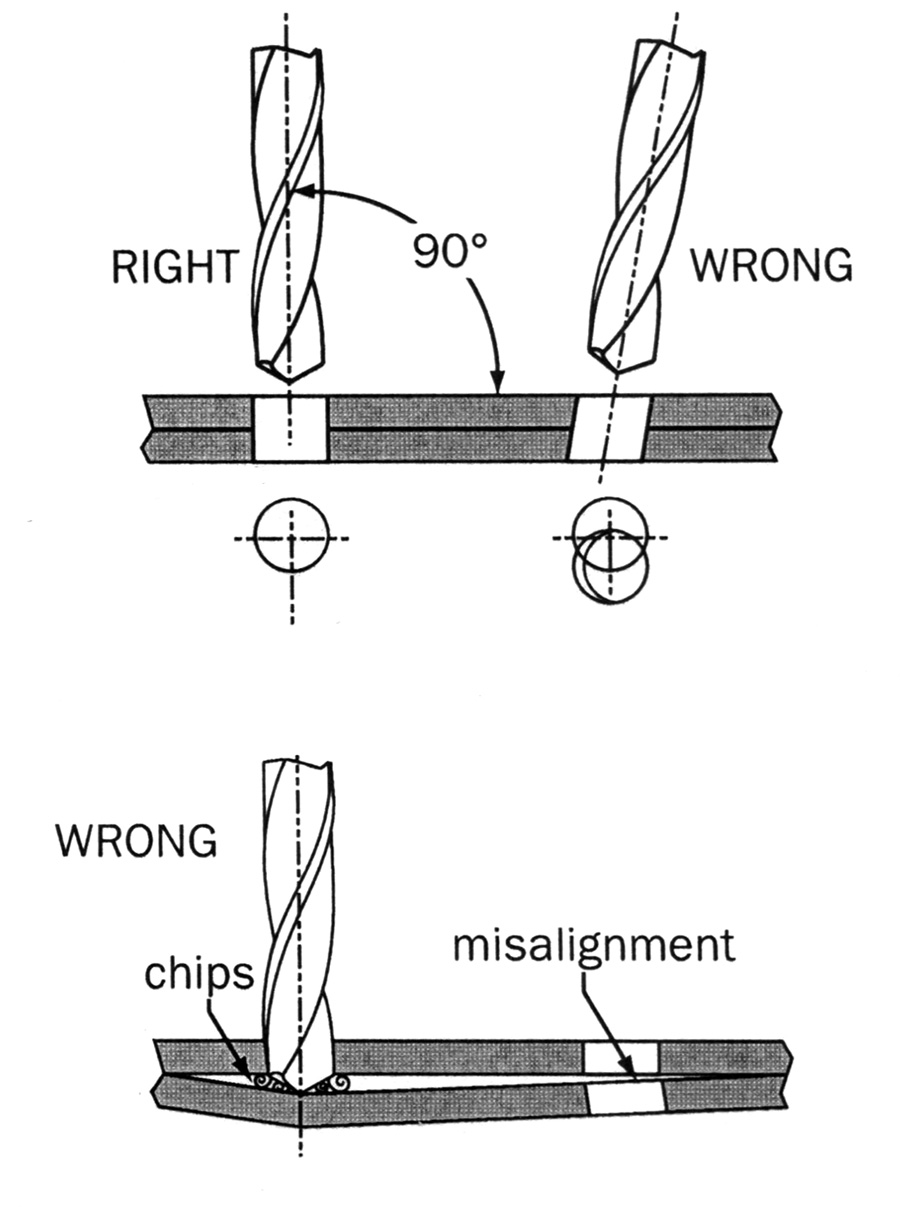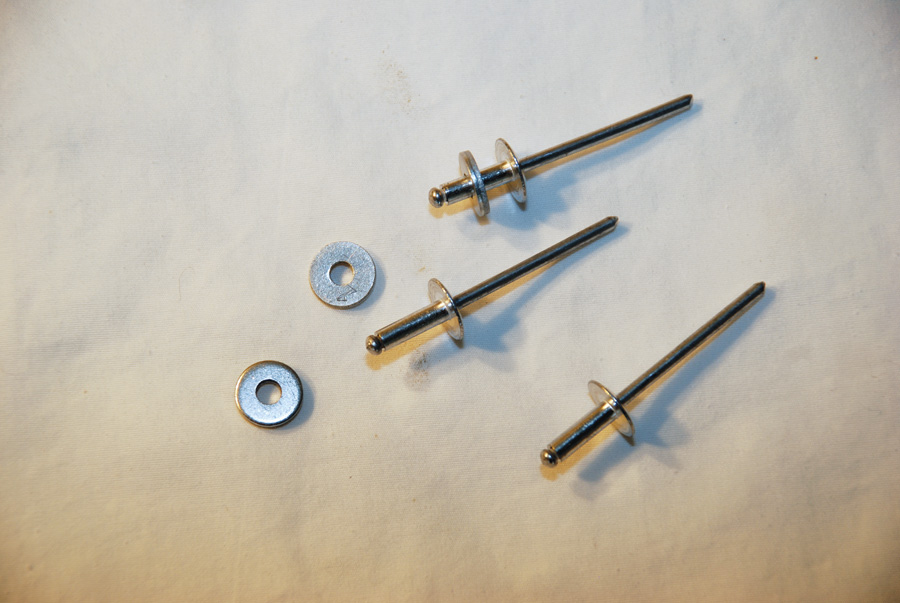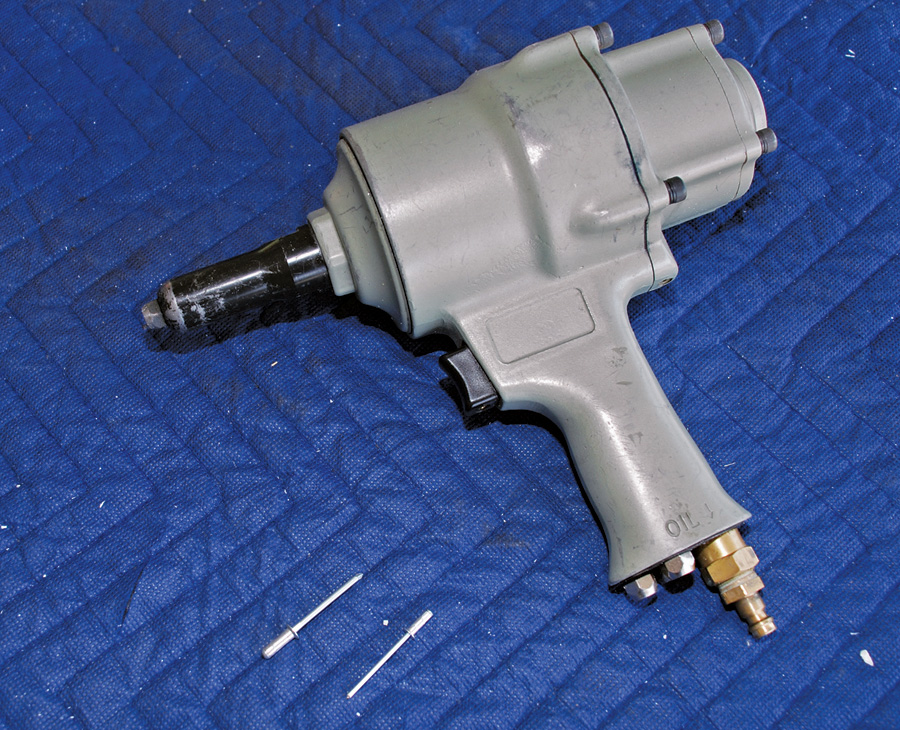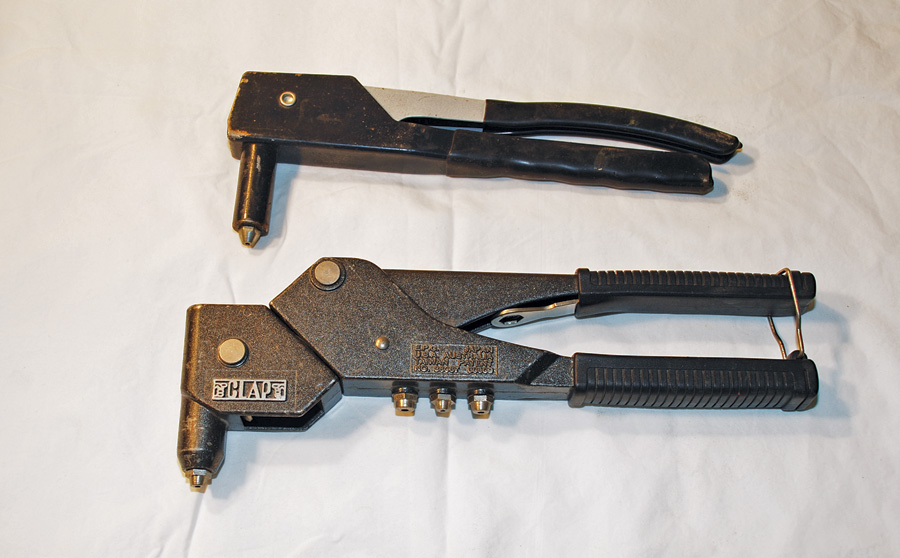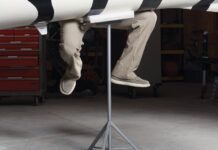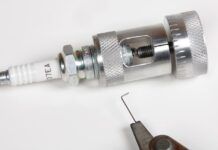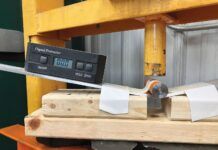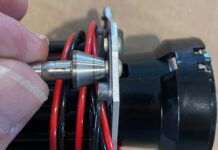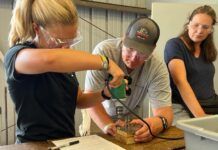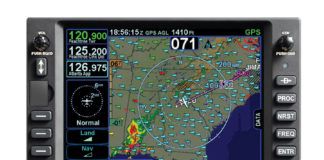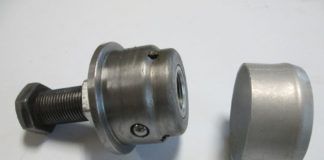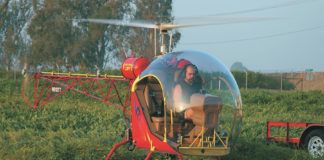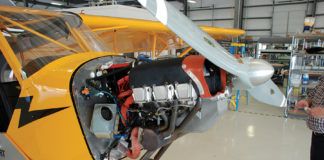This Zenith 750 on display at AirVenture was assembled with blind rivets. This simple design feature made it a good candidate for last year’s One Week Wonder project. Zenith uses a unique system for installing their blind rivets, so be sure to read the instructions and get the correct tools before starting your project.
Rivets have been popular fasteners in aircraft construction for a very long time and remain so today. They provide an excellent means of joining sheets of aluminum together in ways that are smooth and strong. It is no surprise, then, that many Experimental/Amateur-Built aircraft rely on these tried-and-true fasteners. While solid rivets remain the standard for most aircraft designs, the emergence of aircraft-quality blind rivets, also called pull rivets or sometimes POP rivets, has made it possible to save builders a lot of time as they put their planes together. A quick tour of vendors at the most recent AirVenture shows blind rivets being used in kits by CubCrafters, Murphy, RANS, Van’s, Zenith and more. In addition to their use in basic aircraft structures, blind rivets also have many non-structural applications that are of interest to builders, among these securing baffle seals to engine baffles.
What is a Blind Rivet?
A blind rivet gets its name from the fact that it can be installed in a hole that goes into a space that is inaccessible or not visible to the installer. In other words, it can be installed in a “blind” hole. On the other hand, the typical solid aircraft rivet must be bucked, so access to the back side is vital to its proper installation.
There is a host of blind rivets in the marketplace, so a buyer must be careful to get the right rivet for the job. Some of these are aircraft quality, but many are not. Thus some may be used for structural work, but others definitely not. However, there are many places where non-structural blind rivets may do the job quite well.
Just as with solid rivets, the shape and composition of the rivet makes a big difference. With blind rivets, the composition of the rivet stem or mandrel is also an important factor. For example, aluminum rivets can come with aluminum stems or steel stems. Those with steel stems are typically much stronger.
While on the topic of rivet stems, the ability of a rivet to retain its stem under conditions of high loads and heavy vibration separate aircraft rivets from their commercial cousins. A rivet loses much of its strength if the stem falls out. Many low-cost commercial blind rivets will not reliably retain their stems under difficult conditions. This is why they are generally never used for anything on an airplane that holds it together or keeps it running.
Types of Blind Rivets
Cherry Aerospace, Avex, Avdel, Emhart, POP, and others make a wide selection of blind rivets in various materials for many commercial and aircraft uses. They range from N rivets, non-structural commercial rivets, to Cherry MS, CherryMAX, and CherryLOCK structural rivets, plus similar rivets by other manufacturers. In between commercial and aircraft blind rivets, we have Q rivets that are not strong enough to replace the same sized AD rivets, but do possess some structural strength and high-quality characteristics. N and Q rivets can easily be installed with any commercial blind rivet tool, but CherryMAX and CherryLOCK rivets are best installed with a special tool designed just for these stronger rivets. In a pinch CherryMAX rivets can be installed using a standard riveter, but that would not fall under best practices.
Q rivets are available in steel, aluminum, stainless steel, and Monel. Stainless steel Q rivets would work well for assembling a stainless steel firewall in lieu of using driven Monel rivets. Monel blind rivets also work well with stainless steel or titanium. Most kit manufacturers will also allow the next size larger Q rivet as a substitute for an AD rivet, (1/8-inch Q rivet for an AN470AD-3 rivet), but this should be verified on a case-by-case basis. In all cases, when substituting one type of rivet for another, it is best to run it by the airplane designers to be sure they agree with the deviation from their design.
If we need a 1/8-inch blind rivet to replace a 1/8-inch AD rivet, we have another possibility—the CherryMAX rivet. A 1/8-inch aluminum CherryMAX rivet has a shear strength of 664 pounds and a tensile strength of 285 pounds. This makes it much stronger in shear than a 1/8-in. AD rivet, but weaker in tension. Since most rivets are loaded in shear, it is probably not a problem to use the CherryMAX as a replacement. However, probably not a problem is not the same as never a problem, so it would be prudent to consult with your kit maker or airplane designer before making such a substitution. One advantage of CherryMAX rivets is that they come in standard sizes and 1/64-inch oversized for holes that have been damaged.
Just for the sake of clarity, do not casually use a substitute blind rivet of a different material just to gain strength. While it is certainly true that a Q rivet made of plated steel, stainless steel, or Monel would meet or exceed the strength of a same sized AD rivet, such a substitution should only be made after consulting with the aircraft designer and after considering potential dissimilar metal corrosion concerns.
There is a cost issue with the various types of rivets. AD rivets in common sizes typically cost less than two cents each if you buy a quarter-pound or more. Q rivets in 1/8-inch diameter will cost about 18 cents each, roughly ten times more. CherryLOCK or CherryMAX rivets will run about 75 cents each. Q rivets seem like a good choice for firewalls or non-structural applications such as engine baffles.
Some builders of planes that are designed to use blind rivets may decide to use solid AD rivets instead. Some Murphy Moose and Super Rebel builders have done this, in hopes of making their planes stronger, or at least more durable. Whether they achieved their goals or not is hard to say. If the plane was designed with blind rivets, then using those rivets should be a reasonable thing to do consistent with best practices. Is there a good case to be made against using AD rivets in lieu of the specified blind rivets? I don’t think so, except that using AD rivets will be a lot more work. One special note on this—if you are building an ELSA airplane that is designed with blind rivets such as the RV-12, you may not substitute AD rivets without the kit maker’s written permission. If you do, you will lose your ability to register it as an ELSA and will instead be subject to Experimental/Amateur-Built rules.
Let’s review the different types of rivets available to the amateur airplane builder and see where they may be employed consistent with best practices.
Here is an assortment of N rivets. They are available in aluminum with aluminum or steel shanks and in plated steel with steel shanks. They also come with universal, flush, or large heads for an assortment of non-structural applications.
N Rivets
N rivets are non-structural commercial blind rivets made by a number of companies such as Avdel and others. The rated strength of these rivets is low because they do not reliably retain their stems, leaving only the hollow shank to resist shear and tension loads. They should only be used for things that do not hold critical items. N rivets with large flanges are popular for retaining baffle seals to aluminum engine baffles or joining interior trim items. The protruding head listed in the table is roughly the equivalent of a universal head in structural rivets. The flush-head version of these rivets only comes with a 120-degree countersink, not the 100-degree countersink used in aviation.
These are aluminum Q rivets. They come with universal heads and 120-degree flush heads. They are not available with the 100-degree flush heads commonly used in airplane construction. They are, however, available in other materials such as stainless steel, plated steel and Monel.
Q Rivets
Q rivets, now made by Avdel, are sometimes called the poor man’s CherryMAX rivets. However, that gives them too much credit. They are not structural rivets in any broad sense, although they may sometimes be used as a replacement for the next-size-smaller AD rivets, with the approval of the aircraft designer. A same size Q rivet is in no way a direct replacement for an AD rivet. Like N rivets, Q rivets only come with a 120-degree countersink angle. Q rivets do enjoy a significant benefit over N rivets in that they do reliably retain their stems. This makes them something of an intermediate step between true structural rivets and non-structural commercial rivets. These rivets are available in aluminum, stainless steel, plated steel, and Monel. N and Q rivets are easily installable with most any commercial rivet gun.
Cherry MS Rivets
Cherry MS rivets are the lowest grade blind rivets made to a military standard. They are much more deserving of the title of poor man’s CherryMAX rivets than Q rivets. They are technically obsolete but are still in wide use, having been replaced by the stronger CherryMAX rivet. MS rivets are available with 1/64-inch oversized shanks for use in holes that have been damaged and drilled out. As a true structural aircraft rivet, they are available as 100-degree countersink flush rivets and with universal heads. The rated shear strength of MS rivets is dependent on the thickness and type of material being joined together. Consult Cherry Aerospace publications for more information. The major drawback to these rivets is that they may be hard to find.
These are CherryMAX rivets in aluminum with universal and 100-degree flush heads. In most places they will work as a same-size replacement for an AD rivet. They also come in 1/64-inch oversize for holes that have been damaged by mis-drilling or prior rivet removal.
CherryMAX Rivets
CherryMAX rivets are popular structural aircraft rivets for many types of installations where a rough equivalent to a solid AD rivet is desired but difficult or impossible to install. They are size-for-size equivalent to AD rivets in shear, but generally lacking in tension. This is usually not a problem, since most rivets are loaded in shear, but before making any substitution a builder should check with the aircraft designer to be sure there is no problem. These rivets typically have steel or Inconel stems, which gives them very good shear strength. These tougher stems also mean that standard rivet guns can struggle installing these rivets. Therefore, Cherry recommends that their G27 rivet gun be used for these and CherryLOCK rivets. Most aircraft parts vendors such as Aircraft Spruce will stock limited sizes of CherryMAX rivets and the G27 rivet gun. CherryMAX rivets are also available with 1/64-inch oversized shanks for use in holes that have been damaged and drilled out. CherryMAX rivets have aluminum or Monel bodies and steel stems. They are available in a number of configurations including 100-degree countersink flush rivets, and with universal heads.
This diagram made from an image in the CherryMAX catalog shows the maximum slope of the material surface on the back or blind side. If the unevenness or slope exceeds five degrees, then the shop head of the rivet may not hold securely.
These drawings from the CherryMAX catalog make the point that the rivet hole should be perpendicular to the surface of the material. The drawing on the bottom shows that any time you are drilling through two sheets of metal, you need to be sure to clear the chips out from in between the sheets, and never insert a rivet into a misaligned hole.
CherryLOCK
Cherry’s strongest blind rivets are the CherryLOCK series. Their main advantage over CherryMAX rivets is their greater strength in tension. Since tensile strength is not typically an overriding concern to aircraft designers, these rivets are seldom used by amateur builders. Like CherryMAX rivets, they are available in a number of configurations and materials. CherryLOCK aluminum rivets have aluminum bodies and steel stems. Monel rivets have Monel bodies and Inconel stems. They, too, are available with oversized shanks and are best installed with a G27 riveter.
Stanley Engineered Fasteners
Stanley now owns the Avex, Avdel, and POP brand names. Their blind rivets come in a number of sizes and head designs, making them a good alternative for manufacturers seeking options other than those offered by Cherry Aerospace. For example, RANS uses structural rivets by both Avex and Cherry in their kits. Zenith uses Zenair rivets that are essentially Avex rivets. Note that Zenith uses a special flush rivet that is shaped into a universal-type head by means of a special nosepiece on the rivet gun. This is well described in their assembly instructions. Consult the manufacturer’s literature or go online for more information on these products.
Rivet washers come in very handy when riveting metal parts to soft materials such as fiberglass or silicone baffle material. They are usually available at any well-stocked hardware store. The combination of a washer and a large head rivet works well for baffle seal installation.
Installing Blind Rivets
Installing blind rivets is pretty easy, but that does not mean that it should be done carelessly. Some stronger structural rivets should be installed with special rivet guns. Be sure to consult the manufacturer’s literature for their recommendations. Pneumatic riveters can be great time savers, but be sure that the correct nosepiece has been installed for best results. This recommendation also applies to hand riveters. The nosepiece needs to match the diameter of the stem to work well.
A pneumatic blind riveter really saves time and arm fatigue when building a project with a lot of blind rivets. However, it probably represents an unnecessary expenditure for other builders.
Be sure that all parts have been drilled to the correct size hole and properly deburred. Any debris caught between sheets of material will cause the joint to be substandard. When riveting to material with an uneven backside, be sure that the slope of the material being secured does not exceed five degrees. Hold the rivet gun in such a way that the stem is perpendicular to the front-side surface.
If you are securing a solid material to a soft material, consider the use of rivet washers on the back (soft) side if there is access. For example, if aluminum is to be attached to fiberglass or silicone baffle material, use a washer to support the rivet tail if possible. In the case of securing soft baffle seal material in particular, use a large-head rivet on one side and a washer on the other. This will hold the baffle seal more securely and minimize cracking around the rivet head.
Hand-operated blind riveters will work for most projects where only a few blind rivets must be installed. The lower tool has a swiveling head, which can come in handy sometimes. The straight tool above works better in some tight corners where the larger nose of the swivel-head riveter just won’t fit.
Conclusion
If you have an application that calls for blind rivets, do not feel that you are limited to the products in the Aircraft Spruce and Wicks catalogs. There is an incredible number of blind rivets available for many structural and non-structural uses that may be of interest to an airplane builder. Just be sure to check with your airplane’s designer before striking off on your own when it comes to blind rivets. You want to be sure that you are using the right product for the job you are doing. Best practices always say to do your homework before you build, to be sure what you are doing is going to give you a safe result.


